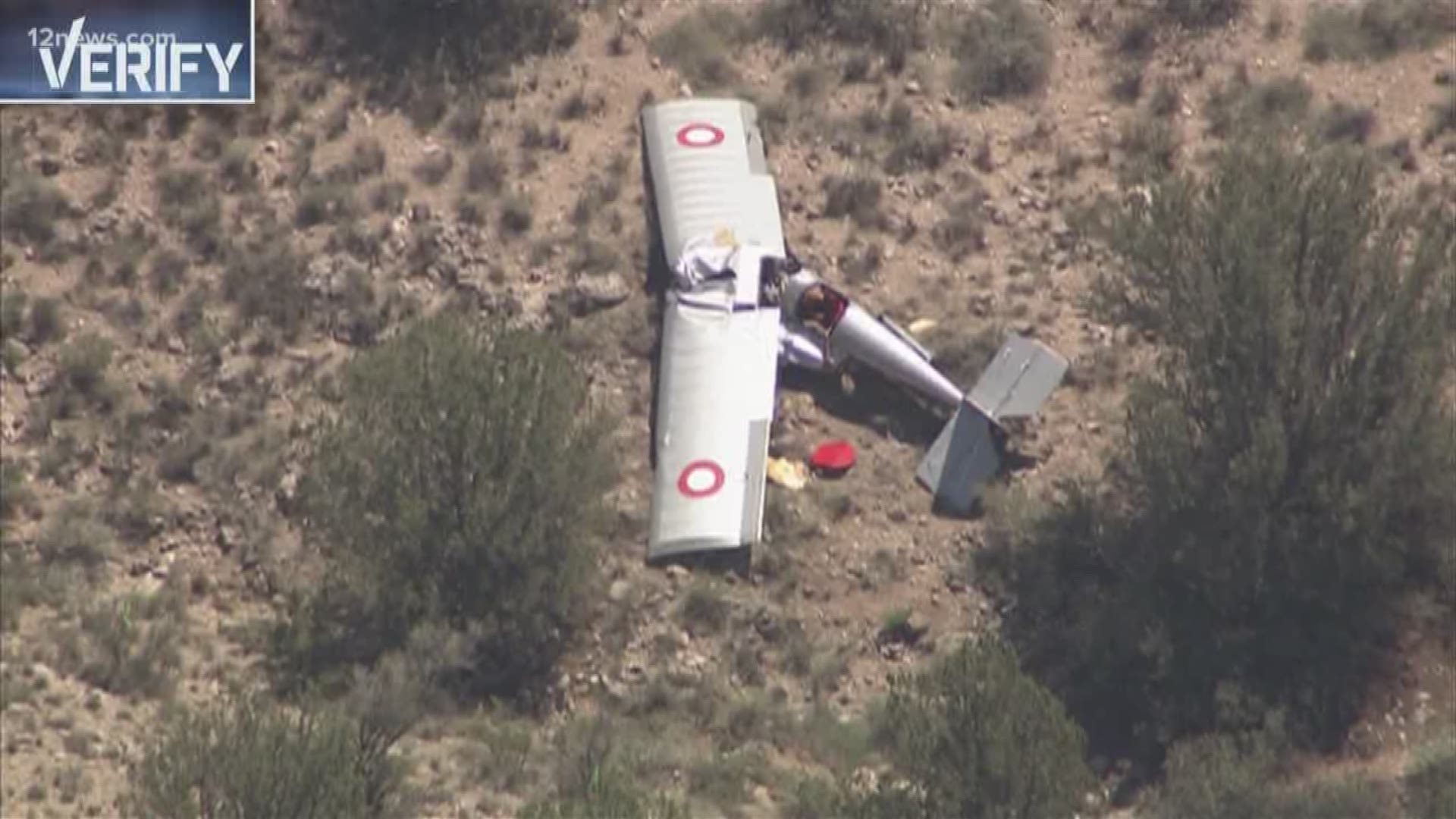PHOENIX — Four people were killed in two crashes involving home-built planes and a Professor of Safety Science at Embry-Riddle Aeronautical University said though “kit planes” are regulated, the requirements to get them in the air are less stringent than those for commercial aircraft.
A dramatic dash cam video shows how two people lost their lives Monday. The plane they were in fell from the sky and crashed in a Phoenix intersection near the Deer Valley Airport.
Monday’s wreck came just two days after another deadly crash, in Camp Verde killed two people.
Both aircraft were home-built planes.
Professor William Waldock of Embry-Riddle Aeronautical University explained the big issue with them is that the airworthiness requirements are different for kit planes.
Waldock revealed anyone can buy a kit plane.
“Once the owner has completed the aircraft, the FAA does come out and inspects it,” Waldock said.
The goal to get these planes in the air is an experimental airworthiness certificate.
“The requirements for that are a lot less stringent than they are for a production aircraft like a Cesna,” Waldock said.
12 News verified, the Federal Aviation Administration does keep tabs on home-built planes, but not as strictly as with commercial aircraft.
The FAA requires an experimental aircraft be flown in a remote area for 40 hours to prove it’s controllable. A pilot cannot fly it over a populated place, other than during landing and take-off from airports. Pilots must tell their passengers if their plane is home-built. Aircraft with experimental airworthiness certificates must undergo inspections every year or every 100 flight-hours.
“Each home-built airplane is really only as good as the person that builds it,” Waldock said.
People don’t need a pilot’s license to buy these kits. Professor Waldock said he knew of cases where people without a pilot’s license who stayed clear of air traffic control and flew their home-built planes in rural areas—usually getting caught after a crash.

